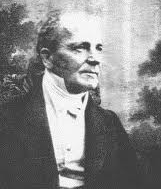What is the Beaufort Scale?
The Beaufort Scale, used throughout the marine world, has developed over many years since it was first devised by Admiral Francis Beaufort in 1806.
Today, the Beaufort scale is defined for seamen in terms of sea state. It’s emphasis is more on the observed effect of the wind, rather than the actual wind speed.
Admiral Francis Beaufort
 Francis Beaufort was born in 1774 in County Meath, Ireland and began his nautical career at 13 as a cabin boy in the Navy. He realised that it was important whilst at sea to be aware of, and to know about weather conditions, so started to keep a meteorological journal, which he continued to do until he died.
Francis Beaufort was born in 1774 in County Meath, Ireland and began his nautical career at 13 as a cabin boy in the Navy. He realised that it was important whilst at sea to be aware of, and to know about weather conditions, so started to keep a meteorological journal, which he continued to do until he died.
By the age of 22 Beaufort had risen to the position of lieutenant. Whilst on assignment in 1812, which was a combined hydro graphic study and patrol mission against the pirates operating out of the Levant, the mission came under attack and Beaufort got hit in the groin by sniper fire, leaving him with a fractured hip. His ship was called back and Beaufort’s Navy career changed direction at this point. He was given the position of Hydrographer to the Admiralty, and never returned to the sea. Beaufort rose to the position of Rear Admiral, and worked in the Navy until two years before his death in 1857, serving for 68 years.
Beaufort invented the Beaufort Scale in 1806, and used it from then onwards. The Royal Navy then adopted his method in 1838. Although over the next hundred years the Beaufort scale was slightly adapted, it is still based around Francis Beaufort’s original concept.
The Beaufort Wind Scale
Table of Beaufort wind force in terms of observed sea state
| Beaufort Force | Wind Speed Knots | Description | Sea Condition |
| 0 | 0 | Calm | Sea like a mirror |
| 1 | 1 – 3 | Light air | Ripples but without foam crests |
| 2 | 4 – 6 | Light breeze | Small wavelets. Crests do not break |
| 3 | 7 – 10 | Gentle breeze | Large wavelets. Perhaps scattered white horses |
| 4 | 11 – 16 | Moderate breeze | Small waves. Fairly frequent white horses |
| 5 | 17 – 21 | Fresh breeze | Moderate waves. Many white horses |
| 6 | 22 – 27 | Strong breeze | Large waves begin to form; white foam crests. Probably spray |
| 7 | 28 – 33 | Near gale | Sea heaps up and white foam blown in streaks along the direction of the wind |
| 8 | 34 – 40 | Gale | Moderately high waves. Crests begin to break into spindrift. The foam is blown in well marked streaks along the direction of the wind |
| 9 | 41 – 47 | Severe gale | High waves. Dense foam along the direction of the wind. Crests of waves begin to roll over. Spray may affect visibility |
| 10 | 48 – 55 | Storm | Very high waves with long overhanging crests. The surface of the sea takes a white appearance. The tumbling of the sea becomes heavy and shock-like. Visibility affected |
| 11 | 56 – 63 | Violent storm | Exceptionally high waves. The sea is completely covered with long white patches of foam lying in the direction of the wind. Visibility affected |
| 12 | 64+ | Hurricane | The air is filled with foam and spray. Sea completely white with driving spray. Visibility very seriously affected |